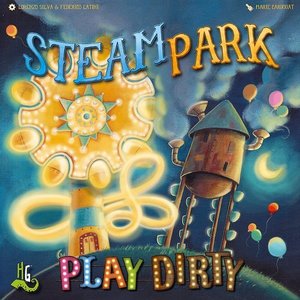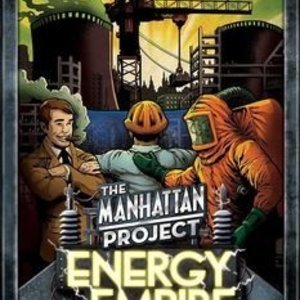
Yatzy Ultimate - Best Dice Game - roll & win
Games and Entertainment
App
The most addictive dice game you can ever play! Refresh your childhood memories with this all-time...

Backgammon - Deluxe
Games and Entertainment
App
Backgammon is one of the oldest board games or dice games for two players. The playing pieces are...

Backgammon - Deluxe HD
Games and Entertainment
App
Backgammon is one of the oldest board games or dice games for two players. The playing pieces are...

Roar and Write!
Tabletop Game
It’s time for the Selection Committee of the Animal Kingdom to choose the new monarch to rule over...
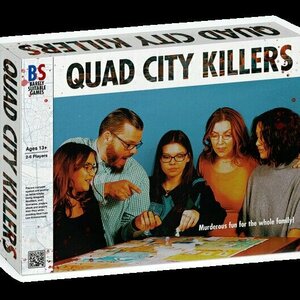
Quad City Killers
Tabletop Game
Quad City Killers: Murderous Fun for the Whole Family! QCK is created in the style of an 80s...
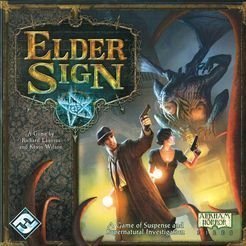
Elder Sign
Tabletop Game
Game description from the publisher: It is 1926, and the museum's extensive collection of exotic...
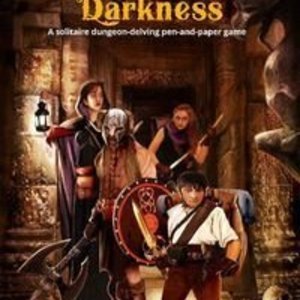
Four Against Darkness
Tabletop Game
Four Against Darkness is a solitaire dungeon-delving game. No miniatures are needed. All you need...
Purple Phoenix Games (2266 KP) rated Steam Park: Play Dirty in Tabletop Games
Aug 20, 2021
This breakdown is for the action dice-rolling and them park-building game Steam Park’s modular expansion, Play Dirty (as in dirt, not as in adult themes). Play Dirty is a modular expansion, so some modules may be added or left out depending on comfort level and enjoyment of each module.
One major module added to this expansion is the addition of a fifth player to Steam Park. As if Steam Park wasn’t frantic enough with four, go ahead and throw in a fifth set of hands going crazy at the table! Also included are gray “Stingy Visitors,” which act as wild visitor types for color, but provide one less Danari (currency in Steam Park) but create NO DIRT. Excellent! Play Dirty also includes a new set of five stands for robots to do business: Fountain, Hall of Mirrors, Office, Shooting Gallery, and Incinerator. Along with these new stands are a set of stand reference tiles to remind players what each stand actually does in the game. Very handy.
The biggest difference-makers in the expansion box are the Ride Extensions, Park Directors, and Espionage Dice. Ride Extensions do just that – extend existing rides in one’s park, but the two different colored extensions (golden and rusty) have their own rules that are triggered depending on colors of robots upon them. The Park Directors module adds a new twist that changes the rules for an aspect of the base game for all players throughout the entire game. These are very powerful changes, and one Park Director is chosen to be used at the beginning of each game. Espionage Dice are very special in that one is added to each player’s white dice and rolled as normal throughout the game. However, the Espionage Dice cost 4 Danari to activate after the Roll Phase. The power here is that the player using the die pays one Danari less to use it when matching the face of white dice in their opponent’s pig sitting to their right. For example, to use a Build Stand face on Espionage Die will cost four Danari normally. However, should the opponent on the right have four Build Stand symbols showing on their white dice, the Espionage Die activates for free!
Must you own the Play Dirty expansion to truly enjoy your plays of Steam Park? Not at all. I do very much enjoy several of the modules in the box though. I really enjoy the powerful Park Directors because it freshens up a rule from the base game or modifies it in interesting ways. I like the new Stands that come in the box as well for additional options during play, but you MUST use the reference tiles, especially if combining all 10 Stands. The other modules are fine, but I would have been happy with just the ones I mentioned here.
Official recommendation: I remember my first play of Steam Park and falling in love with it right away. I have never felt stagnation in my future plays, but adding Play Dirty certainly is a game-changer in every sense of the term. I say definitely pick it up if you are feeling the base game no longer gives you the excitement and frenzy it once did.
Matthew Krueger (10051 KP) rated The Manhattan Project: Energy Empire in Tabletop Games
Feb 22, 2021
Players sit in the roles of countries trying to develop industry and energy production over a period of time roughly from the end of World War II to the present day. Throughout the game, players will construct buildings, power plants as dice, and manage the pollution in their environment with the aim of scoring the most points.
To begin play, the main board for Energy Empire is seeded with starting Building cards. These are divided into three different sectors: Government spaces, Industry spaces, and Commerce spaces. A set of pollution tokens, depending on the number of players, is also stacked on a track as the game timer.
Once the game begins, it flows continuously without rounds. Each player chooses, on their turn, to take a Work Turn or a Generate Turn.
Work Turn- During this type of turn, players must place a single worker on the main board on one of the spaces which represent activities and resources to collect. For example, this may be gaining science, steel, or purchasing oil. Afterwards, depending on which sector the player placed their worker, they can activate any previously purchased buildings, assuming they have enough workers and/or energy. Players can also activate their nation card and move up on the United Nations track, which is a pure competition for end game points. Energy is also used if a player wishes to place a worker on a space occupied by another worker. The player must place additional energy under the worker until their placement stack is larger than any other already placed.
Generate Turn: This type of turn represents the player resetting their work potential for a new set of placing workers. They do this by first potentially collecting an achievement which represents end game points for a variety of goals. They then recall any workers to their Player Mat and discard all Energy tokens. Players can also spend any oil resources to gain oil power plant dice. Finally the player rolls any or all power plant dice they have. This might include Solar/Wind (green dice), Hydro Power (blue dice, limited to one per player), Coal (black dice), and Nuclear (yellow dice). The resulting number of lightning bolts on the dice are delivered as energy tokens to the player. If a clean energy source rolled the highest cardinal number, the player does not collect pollution. If coal, oil, or nuclear dice resulted in the highest number, then the player places a single pollution token into their environment. Players continue this process one after another until a predesignated number of pollution tokens are removed from the game. Players get one final turn and then points are tallied. Players receive points for keeping their player mat free of pollution, building power plants, the United Nations track, and various points for each building constructed.
The most engaging part of the game and the main reason to seek it out, comes from the theme of global power intrigue. The building cards show off the exceptional art in the game.
Manhattan Project: Energy Empire Cards
The global impact cards for the first half of the game are green with a milder impact. Once they go red, prepare for some serious negative events. On top of this theme, the actions associated with everything in the game fit just right. The concept in game actions connect directly to the theme concept. In addition, the country actions to move up on the United Nations track also represent the tone and success formulas for those countries. The mechanism for rolling dice to gain energy and how much pollution is delivered feels just perfect given the competing goals of clean environments and high energy production.
The worker placement mechanism itself (largest stack among existing workers) is not new, but it is just the right mechanism to promote the overall feeling of energy competition. Choosing the space on which to place a worker is highly engaging and the choices tense to maximize efficiency. It is easy to connect with both strategy and tactics in this game.
Even with this engagement, it is also easy to see optimal routes for gaining points assuming opponents follow their strategies. It’s not “easy”, but it is possible to not even worry about opponents blocking a particular path to victory with low numbers of players.
Its a excellent work placement game. One i highly recordmend getting and play.

